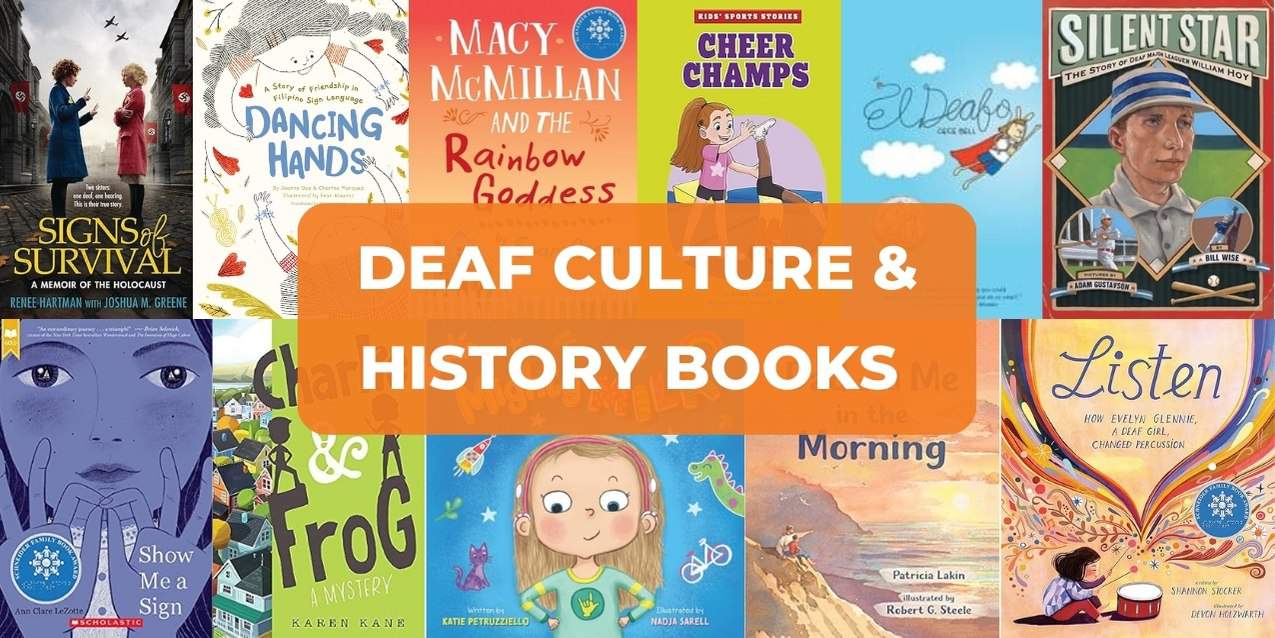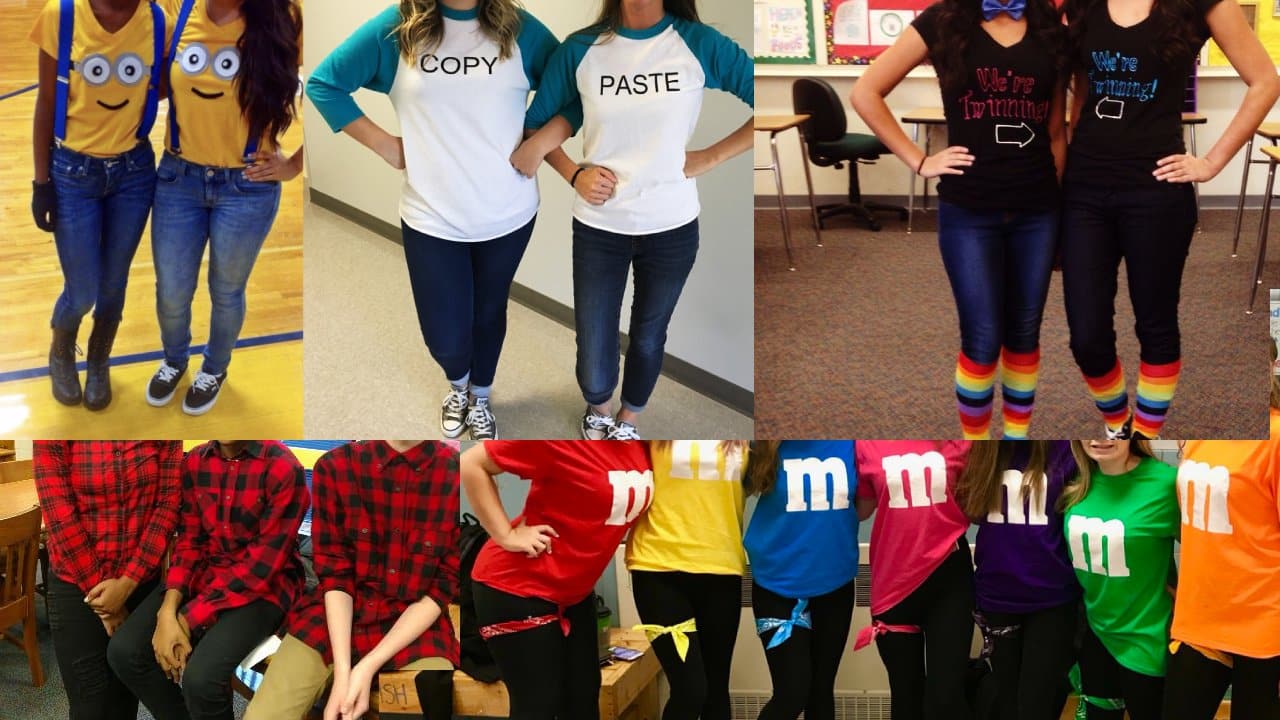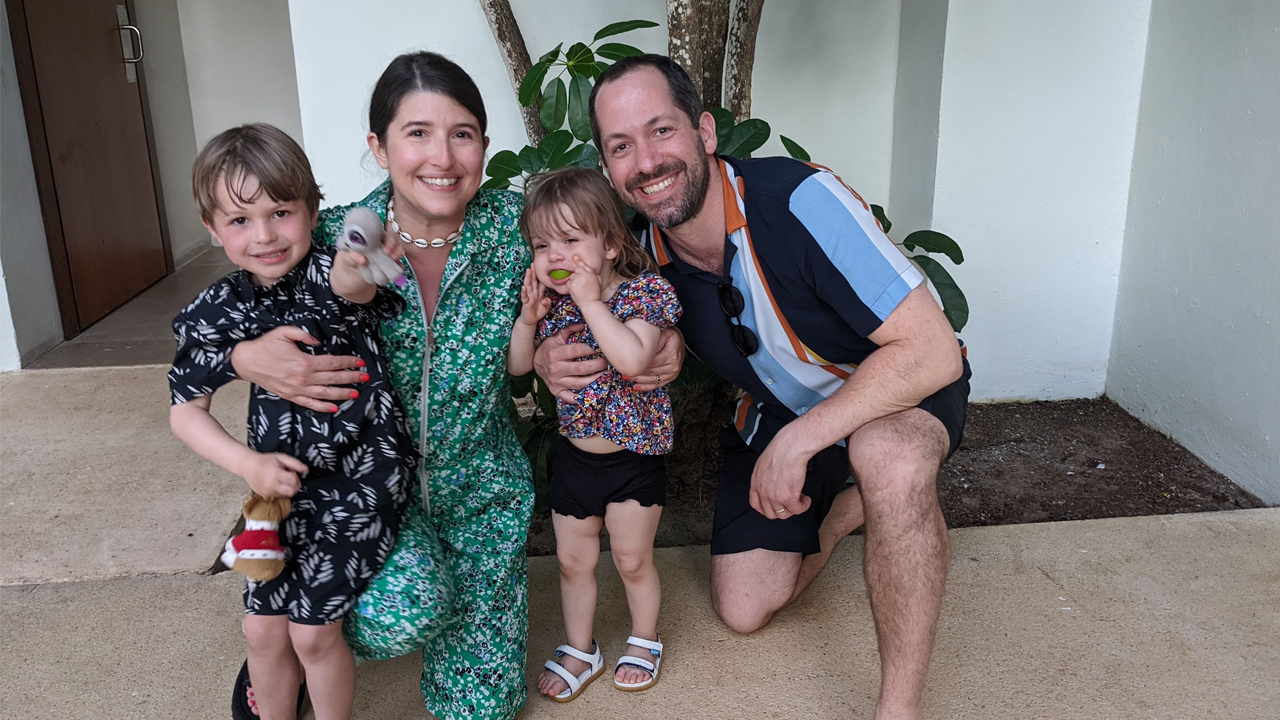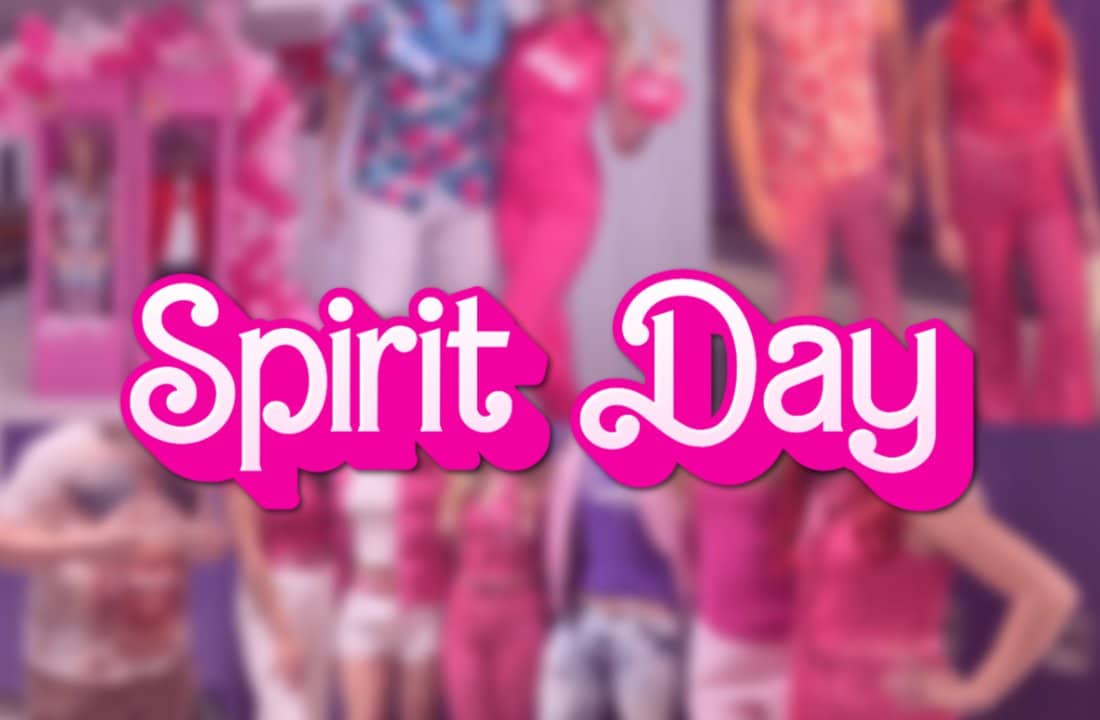Did you know that September is Deaf Awareness Month, and National Deaf History Month is celebrated in April? These months are a time to celebrate the culture, history, and contributions of the D/deaf and hard of hearing community, and to advocate for equitable access by highlighting the unique needs of community members. One of my favorite ways to do that, of course, is by reading (and sharing) a great children’s book!
Five years ago, I was hired to work at an elementary school with a program for deaf and hard of hearing (DHH) students. It has been a joy to be allowed to see into a part of the world that was completely new to me, and to raise my own awareness of books that reflect the lived experience of so many of our students–books that also need to provide a window into the DHH community for our students outside of the program.
Perhaps the most important thing I’ve learned is the absolute diversity within the DHH community. In looking for titles to include in this article, I sought out books representing as many different experiences as possible. Therefore, you will find books below that have characters who use strictly sign language, those who use a combination of speech and sign language, and those who are auditory/oral (listen, speak, and lip read). Some of these characters use hearing aids, some have cochlear implants, and some do not use hearing amplification at all.
There are stories where a character’s deafness is key to the plot and others where it is simply another trait of a complex character. I have also chosen to include a few books whose main character is hearing but who have family members or friends who are deaf. Above all, I wanted books that represented the community with sensitivity and knowledge. Most of these books are by authors who are deaf themselves or who work or live with members of the deaf community.
My hope is that you will find a gem of your own among this list–a book you fall in love with that helps you truly celebrate Deaf Awareness Month!
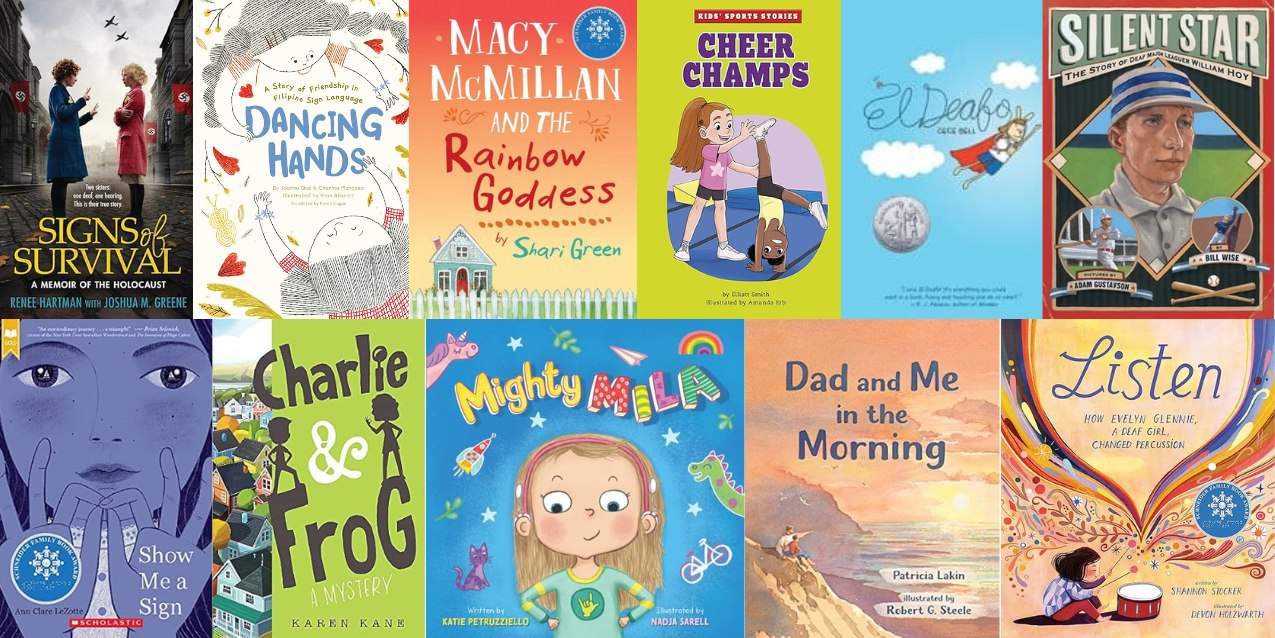
Books that Celebrate Deaf Culture and History
Picture Books
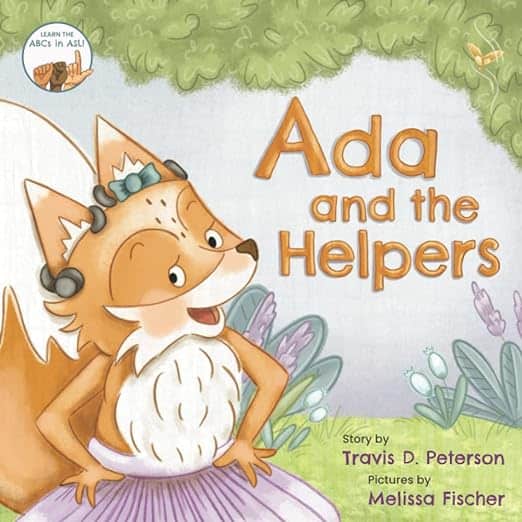
Ada and the Helpers written by Travis D. Peterson, illustrated by Melissa Fischer
A young fox with cochlear implants loves to dance, but she is afraid others will make fun of her “helpers.” On her way to the talent show, she comes across other animals with. When they reach the talent show, her new friends find a way to help Ada in return. With the mantra “Now let’s help others too!” Rhyming text.
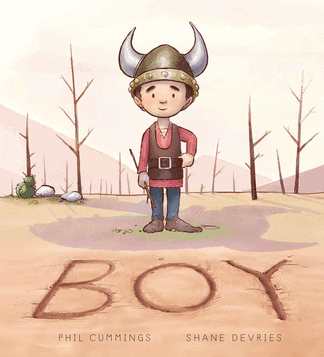
Boy written by Phil Cummings, illustrated by Shane Devries
Set in a village with a nearby castle and a dragon problem, this charming picture book tells the story of a boy who is deaf and who sees the situation differently. Confused by the fighting, the boy gets the king, knights, and dragon to talk to each other instead. Like the dragon, the boy is misunderstood by the villagers, who don’t understand his “dancing hands”.
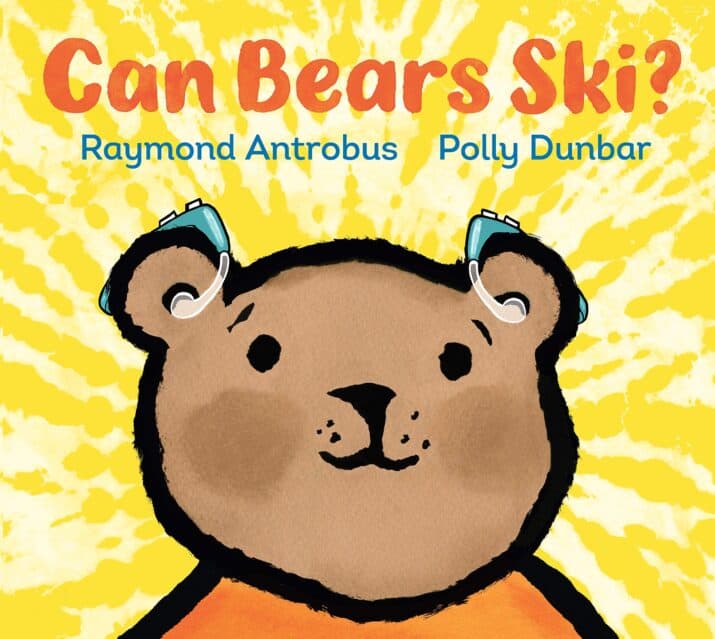
Can Bears Ski? written by Raymond Antrobus, illustrated by Polly Dunbar
Little Bear goes through his days as he has always done, but a strange new question keeps popping up: Can bears ski? As the adults around him begin to realize that Little Bear can’t hear, he gets the support and help he needs, including hearing aids. This semi-autobiographical story does an excellent job of showing the process of diagnosis and treatment in an age appropriate way, with a gentle humor that all readers can connect with.
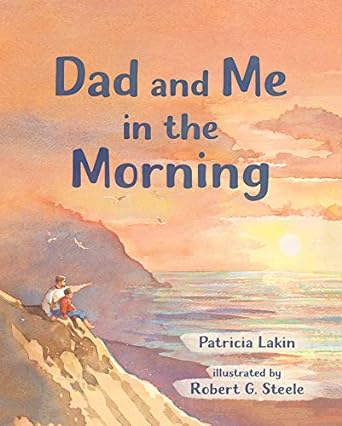
Dad and Me in the Morning written by Patricia Lakin, illustrated by Robert G. Steele
Originally published in 1994 but re-released in paperback in 2019, this book is well worth seeking out. It tells the story of the early morning walk shared by a deaf boy and his father as they go to watch the sunrise together. Reminiscent of Owl Moon for the way it highlights sensory details and accompanies the text with beautiful watercolor illustrations, this peaceful story deserves a permanent place on the read aloud shelf.

Dancing Hands: A Story of Friendship in Filipino Sign Language written by Joanna Que and Charina Marquez, illustrated by Fran Alvarez, translated by Karen Ligas
Sam notices that her new neighbors use sign language, and she wonders what they are saying. As she and young Mai become best friends, Mai teaches Sam how to communicate using Filipino sign language. With clean, simple illustrations, readers can pick up a few signs, too– but more than that, this story builds the understanding that different communities have different sign languages. An excellent starting place to recognize the global nature of Deaf culture.
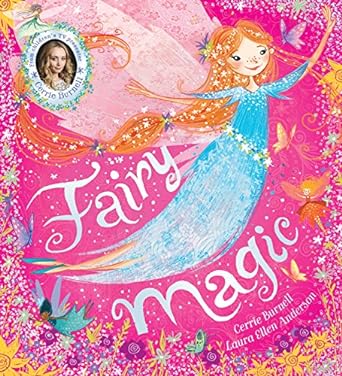
Fairy Magic written by Cerrie Burnell, illustrated by Laura Ellen Anderson
Unique because of its depiction of a child with a BAHA hearing band, this magical story follows Isabelle as she discovers she can communicate with a fairy called Summer-Blue. But no one in her family believes her! She spends the summer learning from the fairy about all the ways of sensing the world in nature. Eventually, her twin brother is willing to “listen to the silence” too, and together, they meet a new fairy just as fall begins. (Published only in the UK.)
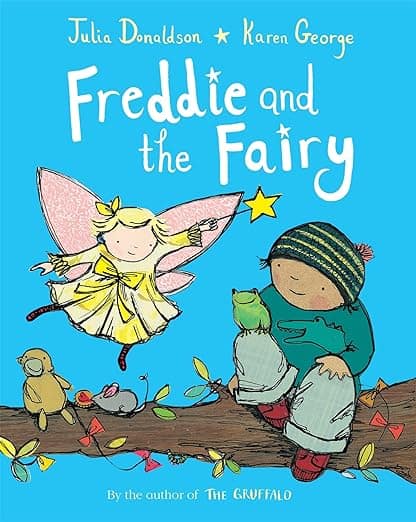
Freddie and the Fairy written by Julia Donaldson, illustrated by Karen George
Bessie-Belle the fairy offers to grant any wish that Freddie has. But Freddie has a habit of mumbling, and Bessie Belle doesn’t hear well! The result is a series of mis-granted wishes: a net instead of a pet, a frog instead of a dog, and so on. With rhyming text and pacing that give children the chance to guess what goes on, this is a fun read aloud that in the end highlights three golden rules to use when speaking to those who are deaf.

Mighty Mila written by Katie Petruzziello, illustrated by Nadja Sarell
Mila has cochlear implants and BIG personality. When she decides to prove that she’s a big kid by doing things on her own. But when it’s time to learn to ride her bike, she realizes that a little help isn’t always a bad thing. Mila’s implants and how she hears the world are seamlessly included in a story that focuses more on every child’s desire for independence as they grow up.
Transitional / Early Reader
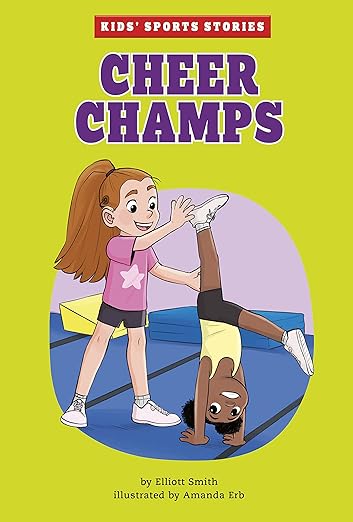
Cheer Champs written by Elliott Smith, illustrated by Amanda Erb
This story follows Leah as she goes from gymnastics to cheerleading. Leah is deaf, and at first, the transition is rocky because her coach and teammates don’t consider how to make the routines inclusive and accessible for her. But with a little help from a new friend, Leah is sure to find success! Told with simple text and a straightforward plotline, this early reader is a quick and enjoyable read.
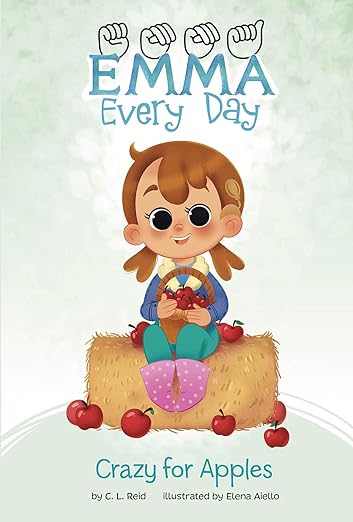
Crazy for Apples written by C.L. Reid, illustrated by Elena Aiello
Part of the excellent Emma Every Day series, this book introduces us to Emma as she goes apple picking with her dad and her best friend, Izzie. Things at the orchard don’t go quite as they hoped, but everyone tries to make the best of it. With the help of Farmer Bell, who can sign, too, the girls find a fun twist at the end of the story. Each book in the series contains the fingerspelling alphabet and ASL signing vocabulary. There are currently twelve published titles with more on the way, and you’ll want to get them all!
Middle Grade
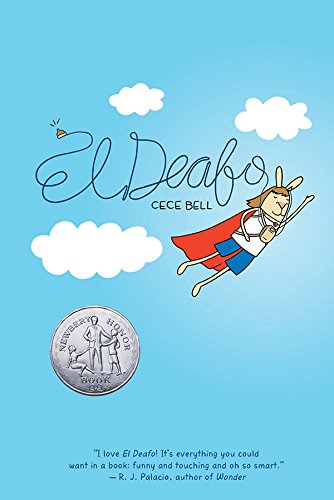
El Deafo written by Cece Bell (GRAPHIC NOVEL)
Based on author Cece Bell’s own experience growing up, El Deafo gets right to the heart of what it’s like to be the only kid with a Phonic Ear in school. At first it makes Cece feel weird and different, but then she realizes that having the power to hear her teacher everywhere (even in the bathroom!) might just be a super power when it comes to impressing other kids. This funny graphic novel is a favorite that kids just can’t get enough of!
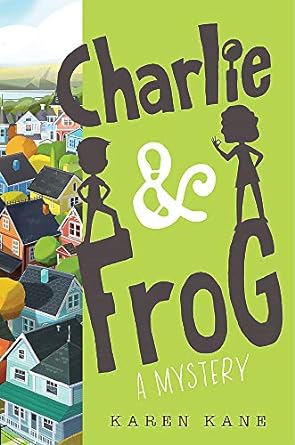
Charlie & Frog written by Karen Kane
Surrounded by feckless adults, Charlie Tickler has no idea how his summer with his grandparents in Castle-on-the-Hudson will go. And that’s before a deaf woman signs the word “dead” to him outside the library and then goes missing. Charlie knows he must solve the mystery, and luckily he finds the one person in town who can help him: Frog Castle. Frog is super smart, very resourceful, and eager to be the best detective around. She also happens to be Deaf and fluent in the ASL they’ll need to know to solve the mystery. A great example of the mystery genre for kids, this book backs up its plot with fingerspelling images and descriptions of how to sign in a win-win formula for a fun read.
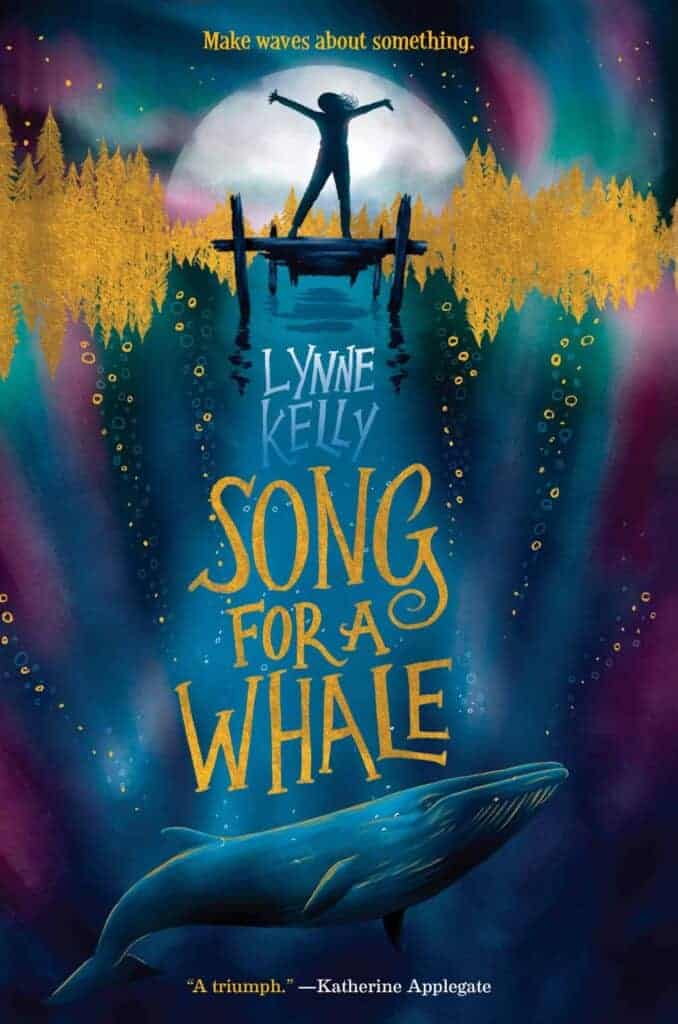
Song for a Whale written by Lynne Kelly
Iris feels more alone than she’s ever felt. She’s the only Deaf kid in her school and the only Deaf person in her immediate family. Her grandparents are Deaf, but her grandpa died and her grandma hasn’t been the same since. So when she learns about a whale, Blue 55, who is just as isolated as she is, she’s determined to use her skills with technology to make a connection–even if she has to travel across the country to do it. An absolutely beautiful story that takes you deep into Iris’s point of view with empathy, heartache, and joy.
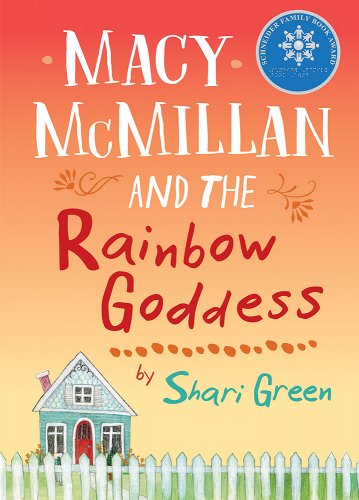
Macy McMillan and the Rainbow Goddess written by Shari Green
Nothing is going right for Macy McMillan: her mom is getting remarried, they have to move from the house she loves, and her best friend Olivia hates her. On top of that, Macy’s mom tells her she has to help the elderly woman next door box up all her books–and Ms. Gillan can’t even sign so Macy can understand her! But it turns out there’s more to Ms. Gillan than Macy would have guessed, and together they begin to share stories and find ways to help each other through the hard parts of life. Told in verse with signing indicated by bold text, this is a heartwarming book you won’t be able to put down.
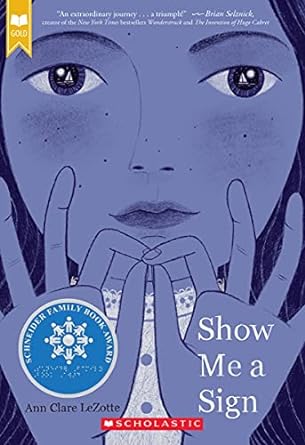
Show Me a Sign and Set Me Free written by Anne Clare LeZotte
Stunningly detailed and descriptive historical fiction, these are the first two books in the Show Me a Sign trilogy, with the third book (Sail Me Away Home) due to be published this year. Show Me a Sign introduces us to Mary Lambert, who lives in the town of Chilmark on Martha’s Vineyard, where historically, 1 in 4 people were deaf. Growing up deaf in this community, Mary doesn’t realize how remarkable it is to be surrounded by those who understand Deaf culture and can use Martha’s Vineyard Sign Language to communicate together. Then she is kidnapped as a “live specimen” and taken to the mainland to be experimented on, and her perspective of herself and the world are turned upside down.
Nonfiction
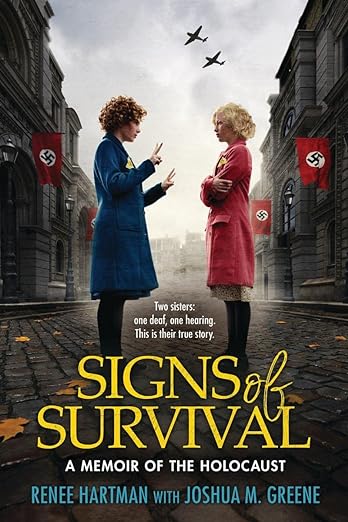
Signs of Survival written by Renee Hartman with Joshua M. Greene
Renee and her sister Herta are young girls living with their Jewish family in Bratislava when the Nazis arrive in 1939, changing their lives completely. As the only hearing member of her family, Renee must become the “family’s ears” and warn them of danger. When the girls are sent away for their own safety, Renee knows she must protect her deaf sister and never leave her isolated and alone. Adapted from recordings of their own testimonials and told in simple transcript form, this book follows the girls through history from the ghettos to the concentration camps and beyond. While the descriptions are age appropriate for upper middle grade readers, the book doesn’t shy away from the horrors of the Holocaust. An important read with a unique perspective on family ties and the Holocaust.
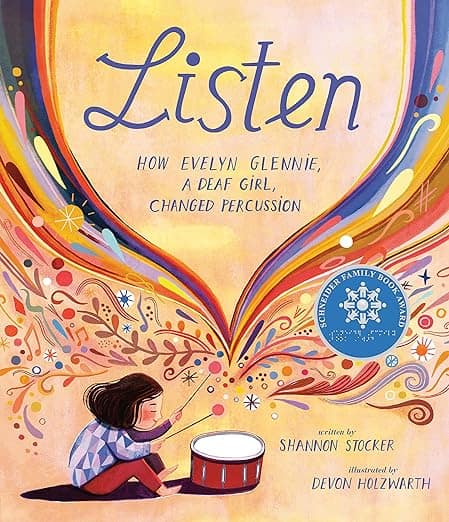
Listen: How Evelyn Glennie, a Deaf Girl, Changed Percussion written by Shannon Stocker, illustrated by Devon Holzwarth
As a young girl growing up in Scotland, Evelyn Glennie loves music. But when she loses her hearing at age ten, everyone seems to think she won’t be able to play music ever again. Everyone but Evelyn and her parents, that is. This biography follows her fight to take her rightful place in the world of music, and the many ways she changed that world. With joyful illustrations and dazzling onomatopoeia carrying the reader along, this book is a must-read!
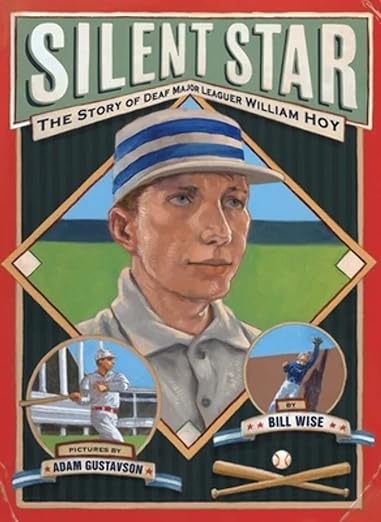
Silent Star: The Story of Deaf Major Leaguer William Hoy by Bill Wise, illustrated by Adam Gustavso
This biography introduces William Hoy, the first deaf baseball player in the major leagues. The book explains how Hoy became deaf as a young child, began to play baseball while attending the Ohio School for the Deaf, and how those two things together created a hugely historic life. Among the highlights are details of how Hoy brought signs to the ballfield when it came to calling balls and strikes, and the description of the only time a deaf batter faced off with a deaf pitcher in major league baseball. In addition, the book addresses Hoy’s nickname, “Dummy” Hoy, head on in kid-friendly language that makes clear why we don’t use this term today. Wise writes with the voice of a true baseball fan and peppers the text with records, firsts, and statistics that will please sports fans. Gustavson’s illustrations match the text with their celebratory tone.
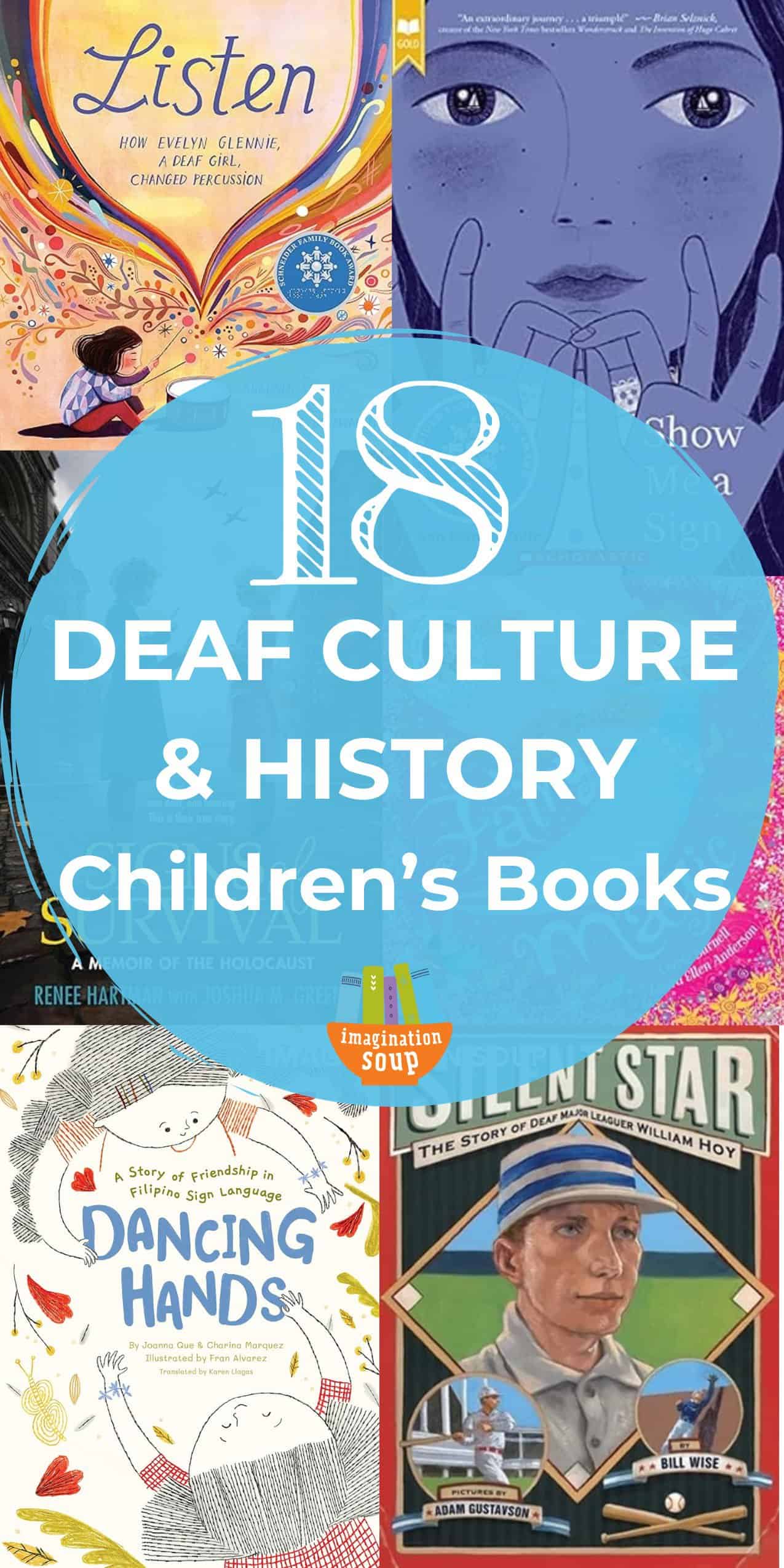
KEEP READING

 PARENTING TIPS
PARENTING TIPS







 PREGNANCY
PREGNANCY








 BABY CARE
BABY CARE








 TODDLERS
TODDLERS








 TEENS
TEENS








 HEALTH CARE
HEALTH CARE







 ACTIVITIES & CRAFTS
ACTIVITIES & CRAFTS








 CONTACT
CONTACT ABOUT
ABOUT